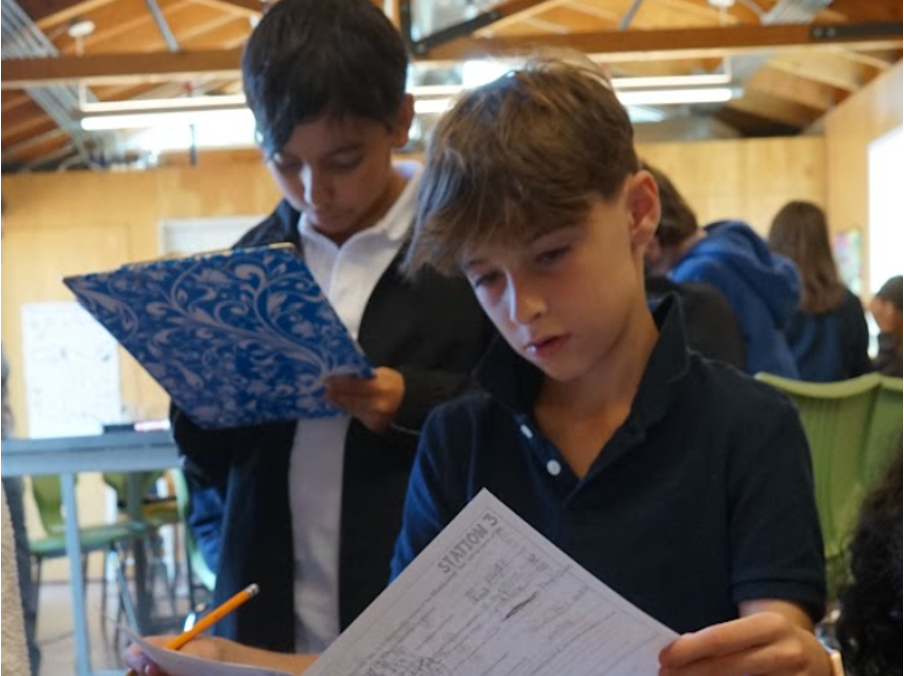“I need a picture!”
5th Grade Mathematicians on Wednesday analyzed different situations about the same context (groups of people sharing pounds of blueberries) to generalize and apply their learning of how division and fractions relate. Working in small groups at their whiteboards, students generated diagrams, number pairs, and written rules to describe the relationship between numbers of people and quantities of blueberries that result in each person getting more than one, less than one, exactly 1/2 a pound, etc.
As they closed the activity, they captured their work, then assessed themselves as a group on a collaboration rubric: how well did we “stay on task,” “actively include people,” and “be open to more than one way?” In their discussions, students reveal the commutative property of multiplication—they interpret ⅓ x 8 and 8 x ⅓ as a third of eight and eight groups of one-third, respectively, and see that both are equal to 8/3. They build fluency by talking about division rules that involve fractions, and they prepare to represent and solve problems that multiply a whole number by a non-unit fraction or mixed number.
On the board, students have three offers to additionally work on later problems in this section if they are waiting for the next thing, inviting them to increase their challenge as they are ready. And in the Challenge Pull Out group this week, students worked on a problem context laying the foundation for solving systems of equations. In this problem, a set of drawings shows how many acrobats, grandmas, and dogs named Ivan each tie each other exactly in rounds of tug of war. Then students have to answer who will win in new combinations of these same characters. Each grandma has equal strength, and five grandmas exactly ties four acrobats of equal strength in tug of war. Then one Ivan-dog exactly ties against a team of two grandmas and one acrobat. Who wins if Ivan and three grandmas play against four acrobats?
In this problem, a set of drawings shows how many acrobats, grandmas, and dogs named Ivan each tie each other exactly in rounds of tug of war.
Problems like these extend students’ reasoning around fractions and help them collaboratively discover ways to solve systems of equations using substitution- and elimination-like methods.


Thank you for these “windows” into what our students are learning Ilsa!